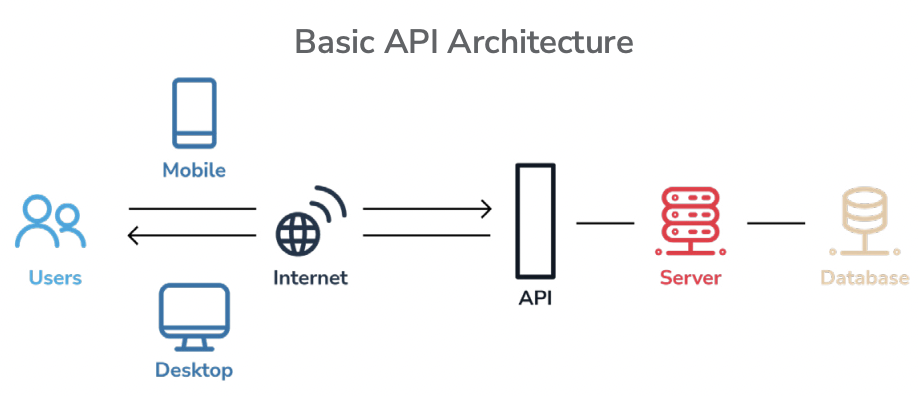The success of modern product development is reliant on mixing the right technologies, people, and processes. The demand for digital products is only expected to increase as the technology industry, and consumer needs evolve. According to Statista, as of Q2 2022, there were 3.5 million digital products on the Google Play store and 2.2 million on the Apple App store. How can businesses innovate quickly and compete in this fast-moving, highly-saturated market?
This blog examines the best practices leading product development companies like Wizeline use to build consistently innovative digital products that offer a seamless user experience and help companies like yours with their product roadmap.
Digital Product Development Best Practices You Can Follow to Stay Competitive
Market research has shown how the world of product development has evolved in recent times. As technology matures, delivery cycles have shortened significantly over the past two decades, enabling businesses to go through the stages of digital product development faster and more frequently. To stay competitive, companies should adopt certain product development practices during the early stages of idea generation. Come with us as we explore the best practices enabling organizations to deliver better products to customers faster.
Agile Development
Without agile, there would be no modern application development. Seriously — it’s that important. 85.9% of 101,592 surveyed developers use agile processes in some form, and 98% of companies surveyed also found agile adoption helpful.
Everything is ever-changing today, from customer expectations to the technologies that integrate to unlock the next great product. Agile development practices improve teams, processes, and products because of the iterative approach, emphasis on collaboration, and commitment to continuous improvement.
But agile isn’t just a developer’s helpful tool – it’s making companies more money. A recent study found that 60% of companies experienced profit growth after adopting agile.

Continuous improvement and implementation of agile ceremonies (planning, standups, grooming, demos/retrospectives) increase time-to-value for our clients. Through agile, we create an environment of trust and collaboration with open and direct feedback that directly translates to product transformation and maturity.
Foundations
While having the right team of engineers, designers, architects, and testers is undoubtedly critical to development success, it almost doesn’t matter if you’re not building the right product. That’s why staying true to a proven, research-driven product development process is so important.
At Wizeline, the product development life cycle starts with Foundations — our proprietary design thinking framework. In strong collaboration with our clients, we take a holistic approach to research, organizing, analyzing, and identifying critical areas of opportunity to better define, prioritize and activate strategic and tactical plans. This allows us to design, build, test, iterate, and deploy products and services using DevOps best practices with a strong focus on continuously measuring critical customer experience and business success factors.
DevOps, SRE & Automation
Only speed and quality can get businesses ahead of competitors in today’s competitive world. The faster your product enters the market, the better it is for your company’s growth. This is why organizations worldwide always look for ways to accelerate their product development lifecycle. However, achieving speed without sacrificing quality is often a challenge that most companies face.
This is where DevOps comes into the picture.
Wikipedia defines DevOps as a group of practices that combines software development (Dev) and IT operations (Ops) to shorten the product development life cycle while delivering updates, features, and fixes in alignment with business goals continuously.
More simply, DevOps is about monitoring all phases of the product development lifecycle, from conceptualization to design, development, integration, deployment, testing, and release, to achieve faster product delivery.
Wizeline follows DevOps methodologies as part of the day-to-day software development process, enabling our engineers to deliver quality updates at high frequency. At Wizeline, we have defined strategies for DevOps practices: security (DevSecOps), Infrastructure as Code, continuous integration and delivery (CI/CD), source code and version control, container and serverless services, monitoring and logging, Platform as a Service (PaaS), organizational change, and continuous testing. The practices are taught to all engineers when joining Wizeline, and embedded Site Reliability Engineer (SRE) team members act as mentors.
The primary measure of effectiveness is deploying working software into a production or production-like environment for customer acceptance. By leveraging the public cloud providers, and modern tools like Infrastructure as Code (Terraform), orchestrators (Kubernetes), and SaaS solutions for CI, security, and monitoring, the team can be set up for success in the first day or week of starting a new project.
Our DevOps Transformation methodology uses value stream mapping to define key metrics that will help the team improve software development performance. After the definition of those metrics and the mechanisms to track them, most teams build their dashboards using open-source components or business analysis tools and publish their dashboards to other areas in the company. Some tools our team uses for value stream mapping are Mural, Lucidchart, and Whimsical.
Architecture, APIs & Microservices
Product architecture represents the relationship between a product’s functions and elements, which is essential because these are crucial components of product development. This means it’s important to identify the team activities and roles that building the product architecture will demand early in the product development process. Well-defined product architecture is a practical step in ensuring that operations go according to plan, ultimately saving time and ensuring the sustainability of a product.
Wizeline regularly contributes to the design of infrastructure and software design architectures on both green-field and modernization projects. We believe that a feature does not provide value until it is in production, and we embrace this in our daily activities. We take client cloud and technology preferences, team compositions, and business needs (requirements, constraints, timelines) into consideration when providing recommendations on serverless and microservices solutions.
In addition to creating performant systems, we also implement distributed tracing so that our applications are maintainable and debuggable and allow for proactive measures through collected metrics and alarms.
We also provide expertise in designing RESTful APIs in accordance with the Richardson Maturity Model and GraphQL and gRPC. We create thoughtful solutions allowing product evolution and reusability while maintaining backward compatibility.
Continuous Testing
Continuous testing (CT) in DevOps is a type of software testing that involves testing at every stage of the development life cycle. Continuous testing aims to evaluate the software’s quality across the life cycle, providing critical feedback earlier and enabling higher-quality and faster deliveries.
The continuous testing market is estimated to reach USD 2.41 billion by 2023 from USD 1.15 billion in 2018. This represents a yearly growth of around 16%, demonstrating the growing need for the timely delivery of high-quality software.
At Wizeline, our approach to quality is the prevention of failures by implementing Shift Left as a core strategy. We use CT as part of the continuous improvement/continuous delivery (CI/CD) process, implement test-driven development (TDD), and have the entire team responsible for quality. We are a tool-agnostic practice, allowing us to utilize the right tool for the need, from open source to proprietary solutions.
Our quality engineers are highly skilled, with a vast majority ISTQB Certified, active in communities, and having strong stakeholder communication skills. Our engineers become evangelists and advisers of Shift Left by propagating best practices.
AI & Data
The global AI market is growing rapidly. By 2024, the AI market is expected to be worth half a trillion USD. Today, artificial intelligence and big data analytics have already rooted themselves in all kinds of business processes. Companies using AI for product development processes have reported higher returns on investments, better efficiency in their processes, and more effective utilization of resources.
For startups and enterprises racing to get new products launched, AI and machine learning (ML) are making solid contributions to accelerating new product development. Here are some examples of ways you can leverage AI & data technologies in product development to achieve maximum results:
Cloud Native
Companies must change how they design, build, and use applications to succeed in fast-paced, software-driven markets. Cloud-native application development is a modern approach to building and running software applications that exploit the flexibility, scalability, and resilience of cloud computing. Cloud-native app development typically includes marrying several technologies like microservices, cloud platforms, containers, and Kubernetes with DevOps and agile methodology to develop better products faster.
At Wizeline, our Digital Core practice is centered around cloud-native solutions. We help our customers transform and mature their software development capabilities to design and build next-generation cloud-native apps and platforms. DevOps transformation, cloud migration, application modernization & re-platforming, developer portals, and test automation are the top services within our Digital Core practice.
Outside this practice, most of our services are cloud-native. All our teams collaborate with modern application development teams, ensuring your business goals are met faster.
How Wizeline Can Help with Your Digital Product Development
By following the best practices highlighted and working with a nearshore partner, you can unlock faster, more agile, and more innovative product development for your organization. The right partner should provide you with the benefits of collaborating with a nearshore company and implementing best practices to architect technical solutions and scale business operations. Wizeline has a proven track record of providing both sets of advantages.
Check out our guide to nearshore product development, which examines the current product development landscape, dives into additional best practices in product development, and demonstrates some benefits organizations can tap into by working with a nearshore partner.
Learn more about how we can work with you to optimize costs and improve productivity while managing the introduction of new technologies to transform your business here, or contact us at consulting@wizeline.com to get started.







